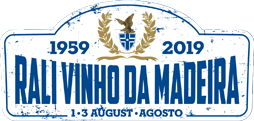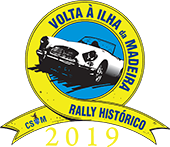The Tour of Madeira Island was created still in 1950’s bringing together two goals. The event embodied the enormous passion that Madeirans have always had for cars and the road, for it must be remembered that, for centuries, it was extremely difficult to pass beyond the closest mountain, due to the island’s orography, and served, as well, as another relevant asset for the promotion of the island as a touristic destination. The competition, debuted in 1959 and being won, for the first time, by José Bernardino Lampreia in MGA, was the outcome of a partnership between the then contemporary official entities and CS Madeira, resulting in a remarkable success story.
In the decade that The Beatles’ single “She loves you” echoed in the local discotheques, directly imported from abroad, the Rally stood for the best national values of the time and allowed the people of the archipelago to not abstain from watching, from their backyards and “poios”, Madeira’s traditional terroirs, racers, such as Horácio Macedo and his unforgettable Mercedes 300SL or his Ferrari 250, António Peixinho in his remarkable Alfa Romeo Giulia, the small but brilliant Austin Cooper of Manuel Gião, or the devilish surprises of the Madeiran Zeca Cunha, who actually managed to win the 1965 edition on a Triumph TR5, go by.
1967 saw the consolidation of the Tour’s international character. Jean-Pierre Nicolas, nowadays an unavoidable figure at the international stage of motor racing, was the first foreigner to win in our island. The Renault 8, developed by the “magician” Amedée Gordini, monopolized attentions and occupied the top of the ranks. Madeira’s road infrastructure, developing at the slow pace of the pick, made them hard and difficult partners when paired with the fragility of the mechanical state of the art of the time.
Together, these factors determined that, in the 1969 edition, soon after the United States planted their flag on the moon’s surface, only one car managed to reach the finishing line, a feat authored by the Portuguese racer Américo Nunes. Equipped with a very good and potent Porsche 911S, the pilot had already won the previous year but was still far from knowing that, a decade later, he would consolidate the title of “King of the roads of Madeira”. A decade after its creation, the Tour was already one of the most important social events in the archipelago.














